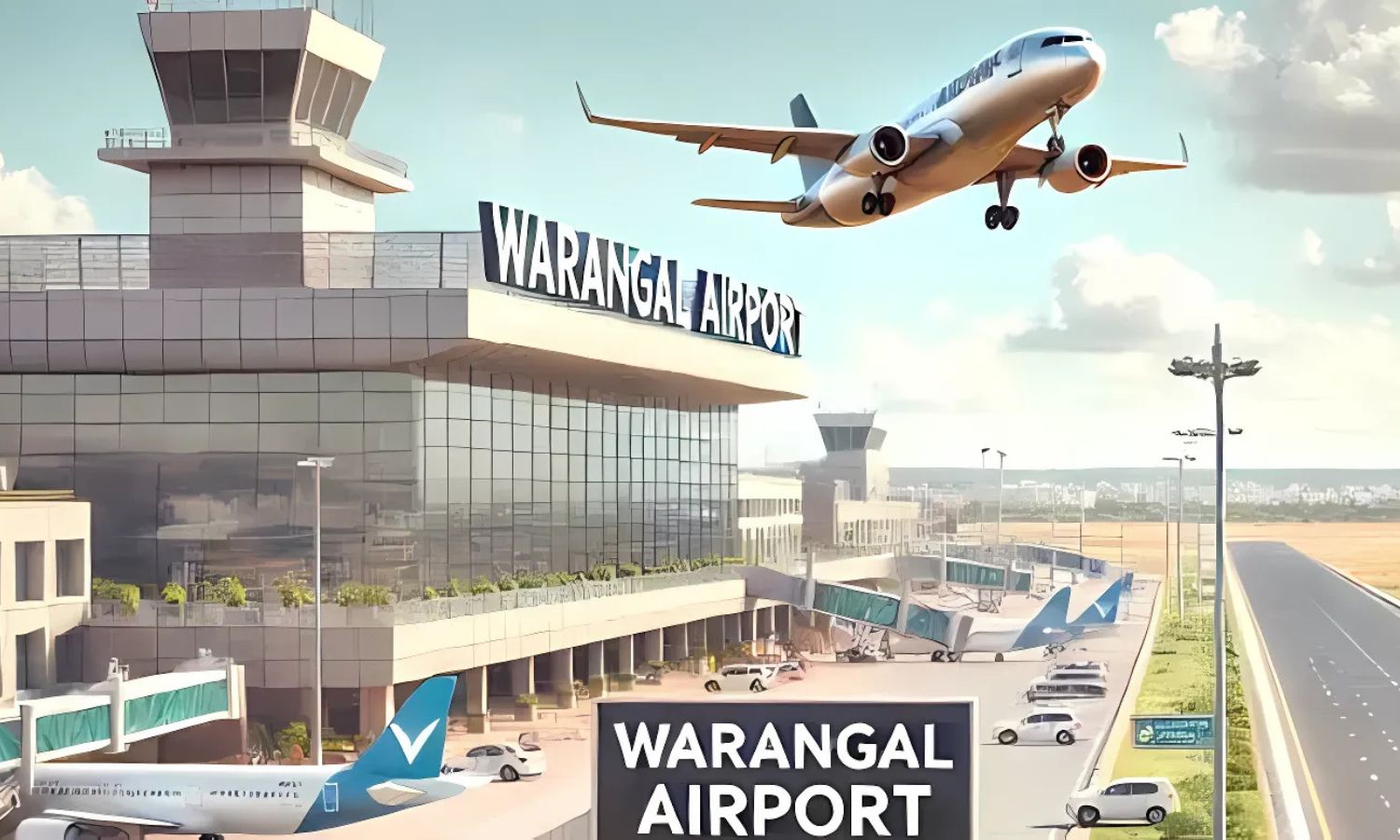Telangana’s aviation dreams take flight: Warangal and Adilabad airports to reshape regional connectivity
Hyderabad: Telangana is gearing up for a major leap in its aviation sector, with plans to develop state-of-the-art airports in Warangal and Adilabad that promise to transform regional connectivity and invigorate local economies.
Under a viability gap funding arrangement, the Centre will cover 80% of the operational expenses for these airports over the next three years, while the state government will shoulder the remaining 20%. This strategic partnership aims to make regional air travel financially sustainable, ensuring smooth operations from day one.
At Warangal, the Airports Authority of India (AAI) plans to construct a modern airport on 1,000 acres of land, replacing the Nizam-era Mamnoor airstrip, which currently has two dilapidated runways measuring 1,400 and 1,000 metres. A brand-new 3,000-metre runway will be built to handle large aircraft like Boeing 737s and Airbus A320s, giving Warangal direct access to national and potentially international flights. The AAI already controls 696.14 acres in the area and is in the process of acquiring an additional 280 acres by relocating two nearby villages a move that has sparked a sensitive negotiation process with local residents. To smoothen the transition, the state has sanctioned ₹200 crore to compensate affected families with alternative government land.
In Adilabad, where the original airstrip served as a modest Indian Air Force helipad, plans are more complex. The AAI and IAF have agreed to repurpose the site currently under IAF control with 369 acres—by adding 250 more acres for a civilian airport. For decades, the IAF had hoped to expand this site into a jet-capable base, and the latest approvals bring that vision closer to reality.
State aviation officials revealed that both airports will boast modern facilities with terminals designed to accommodate 500 passengers at a time, with each project carrying an estimated price tag of ₹500–600 crore. These airports will not only connect underserved regions but also catalyse economic growth in Warangal and Adilabad, bringing opportunities to areas historically left out of the aviation boom.
Chief Minister Revanth Reddy has asked the AAI to fast-track construction and complete both airports within 18 months, even though the AAI had initially planned for a 24-month timeline. Aviation experts have hailed the state’s aggressive push as a game-changer, noting that such investment can place Telangana firmly on India’s aviation map.
Beyond air travel, the airports are expected to stimulate investment in roads, rail links, hotels, and related infrastructure. Local farmers around Warangal are particularly hopeful, seeing the airport as a gateway to faster transport for their produce to markets nationwide. Adilabad’s tribal artisans, famous for their wooden crafts, carpets, honey, and natural herbs, could soon find new markets both domestically and abroad thanks to improved air connectivity.
Experts believe the state’s strategy will strengthen Telangana’s position as a southern aviation hub, especially as India’s regional aviation sector continues to expand. With support from the Centre’s UDAN scheme, the airports will connect small towns to the national air grid, boosting trade, tourism, and investment.
Industry insiders predict that once operational, these airports will attract international airlines eager to expand beyond Hyderabad’s already bustling international terminal. Analysts also highlight the potential impact on education and healthcare, with students and patients gaining easier access to national and global opportunities.
In line with global best practices, the airports will integrate eco-friendly technologies such as solar panels, rainwater harvesting, and water recycling units. Modern security measures—including advanced CCTV, biometric systems, and robust fire safety protocols will ensure passenger safety. Environmental experts have also called for extensive greenbelts to mitigate noise and pollution, and officials have promised all necessary clearances will be secured to protect local ecosystems.
Telangana’s aviation story is now more than just a tale of air travel it’s a bold economic blueprint. As construction progresses, the state’s vision of connecting every district by air is inching closer to reality. The airports, with potential for special economic zones nearby, are expected to generate thousands of direct and indirect jobs, benefiting engineers, labourers, technical staff, and the entire supply chain.
Warangal’s proposed airport could also supercharge the region’s flagship Kakatiya Mega Textile Park, boosting exports and attracting international buyers. Meanwhile, Adilabad’s unique tribal heritage and eco-tourism offerings could draw visitors from across the country and beyond, turning its cultural tapestry into an economic asset.
If these projects meet their ambitious deadlines, Telangana may well become a case study in rapid aviation development, inspiring other states to follow suit. In the words of one aviation analyst, “Telangana’s airports aren’t just terminals they’re engines of growth, shaping the state’s future as a national and global aviation leader.”

